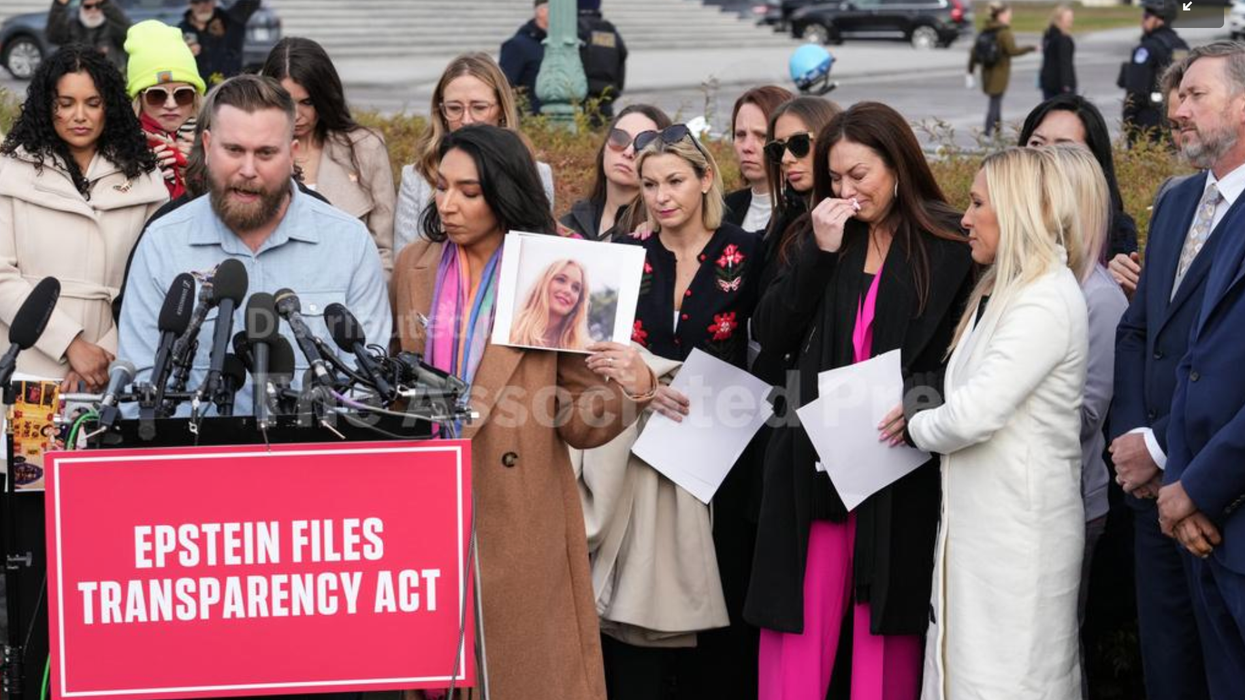Last spring and summer, The Fulcrum published a 30-part series on Project 2025. Now that Donald Trump’s second term has commenced, The Fulcrum has started Part 2 of the series.
No one should be surprised by Donald Trump's attempt to dismantle Diversity, Equity, and Inclusion (DEI) programs, given his many promises during his campaign for President to do just that.
During his presidential campaign, he made several statements about DEI, including referring to DEI as a "hoax" and claiming it was detrimental to the United States. In one of his speeches, he stated, "We have ended the tyranny of so-called diversity, equity, and inclusion policies all across the entire federal government and, indeed, the private sector and our military," emphasizing his point that if elected, his administration would dismantle DEI programs.
Many of Trump's DEI campaign pledges were seemingly from Project 2025’s policy blueprint created by The Heritage Foundation, a conservative think tank in the United States designed to reshape the federal government by consolidating executive power and implementing right-wing policies. Yet despite the striking similarities between Project 2025 and Trump's promises, Trump disavowed any connection to Project 2025 during the campaign, stating, "I have nothing to do with Project 2025. I haven’t read it. I don’t want to read it purposely. I’m not going to read it". In July of 2024, he went even further, referring to the project's authors as part of the far-right and distancing himself from them.
Project 2025 initiatives significantly propose the elimination of DEI programs within federal agencies, including offices, staff positions, and training programs dedicated to promoting diversity and inclusion. Project 2025 went beyond just suggesting changes in policy but advocated removing terms like "diversity," "equity," and "inclusion" from federal rules, regulations, contracts, and grants and encouraged the Justice Department to investigate and prosecute DEI practices in private entities, framing them as discriminatory.
And now that Trump is in office, despite the denials of “having nothing to do with Project 2025,” his actions speak louder than his words. On his first day in office, Trump signed several executive orders targeting DEI initiatives. Trump's executive order directed federal agencies to terminate all DEI-related mandates, policies, and programs, including those in federal contracting and spending. Additionally. The order requires agencies to close DEI offices and positions and to amend rules and regulations to align with a "colorblind and merit-based" approach.
To the surprise of no one, these actions have sparked significant debate, with supporters arguing they promote fairness and critics claiming they undermine efforts to address systemic inequalities.
It is time for our nation to get beyond the political sound bites and political slogans and consider the ethical questions related to the moral issues embedded in the words Diversity, Equity, and Inclusion. Most Americans support the principles of DEI, like fairness and creating opportunities for all, regardless of background, even if they don’t necessarily agree with some of the formalized programs of DEI. For example, some people oppose DEI initiatives because they feel these programs are too prescriptive or prioritize quotas over merit.
It’s time to get away from stigmatizing DEI as a policy but rather a belief that diversity enriches communities and organizations and promotes understanding and collaboration among people from different walks of life.
Don’t we all want a society where everyone feels valued and empowered?
The court of public opinion takes time– it is a gradual process, unlike the courts, where judges or juries make decisions within a specific timeframe. There are already many challenges to Trump's DEI executive orders. A federal judge has issued a nationwide injunction temporarily blocking the enforcement of key provisions in President Trump's executive orders targeting DEI programs. This includes halting the termination of "equity-related" grants or contracts and requiring federal contractors to certify they don't operate DEI programs deemed "illegal." The case is currently under appeal, so the final outcome is still pending
The temporary court order expires on February 21st, but based on Judge Adam Abelson of the US District Court for the District of Maryland's statement that the courts must fully consider the “balance of harms” and the “public interest,” it seems highly likely that the Richmond, Va.-based US Court of Appeals for the Fourth Circuit, will rule similarly.
Last month, Abelson found that several provisions in the orders violated constitutional due process protections because they were too vague or ran afoul of First Amendment free speech rights. He focused specifically on mandates for agencies to terminate “equity-related” grants or contracts, for contractors or grantees to certify they aren’t “promoting DEI," and for the attorney general to “encourage” the private sector to end DEI programs under threat of enforcement.
Regardless of the outcome, there is no doubt that Project 2025 has influenced the Trump administration since several components of Project 2025, which are related to diversity, equity, and inclusion (DEI), have been implemented. Some include:
- Deleting DEI Terms: Project 2025 calls for removing terms like "diversity, equity, and inclusion," "gender equity," and "reproductive health" from federal rules, agency regulations, contracts, and grants.
- Ending DEI Programs: The project aims to terminate DEI mandates, policies, and programs across federal agencies.
- Prohibiting DEI Training: Executive orders have been issued to prohibit the federal government from paying for critical race theory training and to eliminate racial classification and quotas.
As Americans consider the complex questions related to DEI, it is worth reflecting on what DEI really means. In a recent column in the Fulcrum, F. Willis Johnson offered this that we all should reflect on:
The path forward lies in grounding DEI advocacy in data, facts, and demonstrated outcomes while remaining open to acknowledging its points of uplift and areas needing improvement. Rather than engaging in polemics, effective DEI work must counter misconceptions with evidence, appeal to shared values of fairness and respect, and maintain the courage to acknowledge when specific practices need adjustment. This approach recognizes deliberate building toward a representative, diverse, and inclusive nation requires more than ideological certainty — it demands practical wisdom, empirical evidence, and the ability to engage constructively with diverse perspectives while maintaining fidelity to core principles of equity and justice.
It is time for our nation to acknowledge that many people, backgrounds, cultures, and ideas must coexist and form a cohesive whole. It is time for Americans to realize that it is our civic responsibility as citizens and citizen leaders to rise above infighting and demagoguery. It is time for us to live into the great seal of our nation, E pluribus unum, “out of many, one,” a powerful symbol symbolizing unity in diversity, acknowledging that the "one" in the phrase represents the collective nation, while the "many" represents the individual states or the diverse populace.
Let us live into this ideal of forging strength through togetherness and harmony.
David Nevins is co-publisher of The Fulcrum and co-founder and board chairman of the Bridge Alliance Education Fund.



















